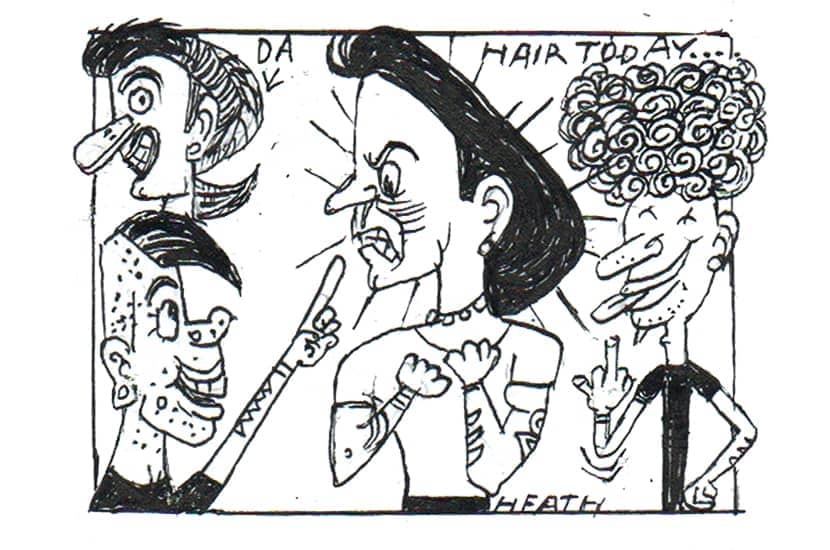The mullet is back in fashion, which is proof that true evil never dies. What’s more, the trend is being driven by public-school boys. I only noticed its return last month, when I attended a local ball in East Sussex frequented by the type of people you’d expect at a local ball in East Sussex. But this year was different. There were 17-year-olds with mullets everywhere. ‘Why? What does it all mean?’ I asked anyone who would listen. We were all baffled.
The mullet has been trending on Instagram and TikTok, supposedly a consequence of 2020’s boredom-induced madness. Rihanna sported a mullet recently as did Cara Delevingne in last year’s Savage X Fenty fashion show. If you’re Rihanna or Cara you can wear anything or nothing — and still look great. This isn’t necessarily true if you’re an oily teen from Sevenoaks.
Why grow a mullet? Vice noted the trend late last year and interviewed a few boarding-school boys to find out what was going on. ‘When you see a good mullet, it’s just funny. It’s like, fair enough,’ said 17-year-old Zac. Indeed. But is that all?
The modern mullet is the ultimate statement haircut, originally a symbol of individuality and rebellion worn by lesbians in the 1970s. With their mullets, these women reclaimed negative stereotypes and, as queer culture often does, turned them into a fashion trend. Paul McCartney and Ziggy Stardust then got involved and we probably have them to thank for the 1980s mullet boom.
The look is hardly new — back in the 6th century, people were complaining about it. Here’s Byzantine scholar Procopius observing Roman charioteers: ‘The hair of their heads they cut off in front back to the temples, leaving the part behind to hang down to a very great length in a senseless fashion.








Comments
Join the debate for just £1 a month
Be part of the conversation with other Spectator readers by getting your first three months for £3.
UNLOCK ACCESS Just £1 a monthAlready a subscriber? Log in